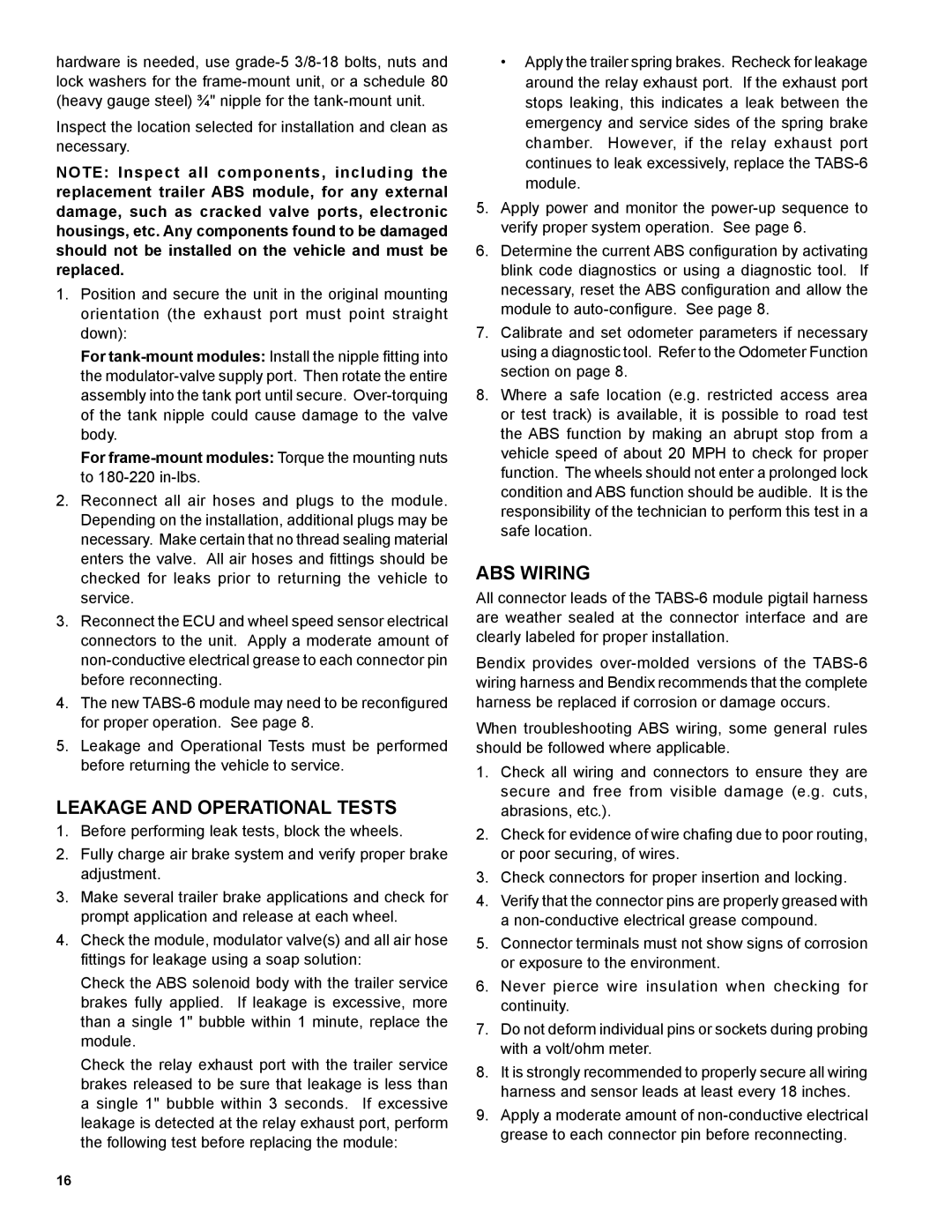hardware is needed, use
Inspect the location selected for installation and clean as necessary.
NOTE: Inspect all components, including the replacement trailer ABS module, for any external damage, such as cracked valve ports, electronic housings, etc. Any components found to be damaged should not be installed on the vehicle and must be replaced.
1.Position and secure the unit in the original mounting orientation (the exhaust port must point straight down):
For
For
2.Reconnect all air hoses and plugs to the module. Depending on the installation, additional plugs may be necessary. Make certain that no thread sealing material enters the valve. All air hoses and fittings should be checked for leaks prior to returning the vehicle to service.
3.Reconnect the ECU and wheel speed sensor electrical connectors to the unit. Apply a moderate amount of
4.The new
5.Leakage and Operational Tests must be performed before returning the vehicle to service.
LEAKAGE AND OPERATIONAL TESTS
1.Before performing leak tests, block the wheels.
2.Fully charge air brake system and verify proper brake adjustment.
3.Make several trailer brake applications and check for prompt application and release at each wheel.
4.Check the module, modulator valve(s) and all air hose fittings for leakage using a soap solution:
Check the ABS solenoid body with the trailer service brakes fully applied. If leakage is excessive, more than a single 1" bubble within 1 minute, replace the module.
Check the relay exhaust port with the trailer service brakes released to be sure that leakage is less than a single 1" bubble within 3 seconds. If excessive leakage is detected at the relay exhaust port, perform the following test before replacing the module:
16
•Apply the trailer spring brakes. Recheck for leakage around the relay exhaust port. If the exhaust port stops leaking, this indicates a leak between the emergency and service sides of the spring brake chamber. However, if the relay exhaust port continues to leak excessively, replace the
5.Apply power and monitor the
6.Determine the current ABS configuration by activating blink code diagnostics or using a diagnostic tool. If necessary, reset the ABS configuration and allow the module to
7.Calibrate and set odometer parameters if necessary using a diagnostic tool. Refer to the Odometer Function section on page 8.
8.Where a safe location (e.g. restricted access area or test track) is available, it is possible to road test the ABS function by making an abrupt stop from a vehicle speed of about 20 MPH to check for proper function. The wheels should not enter a prolonged lock condition and ABS function should be audible. It is the responsibility of the technician to perform this test in a safe location.
ABS WIRING
All connector leads of the
Bendix provides
When troubleshooting ABS wiring, some general rules should be followed where applicable.
1.Check all wiring and connectors to ensure they are secure and free from visible damage (e.g. cuts, abrasions, etc.).
2.Check for evidence of wire chafing due to poor routing, or poor securing, of wires.
3.Check connectors for proper insertion and locking.
4.Verify that the connector pins are properly greased with a
5.Connector terminals must not show signs of corrosion or exposure to the environment.
6.Never pierce wire insulation when checking for continuity.
7.Do not deform individual pins or sockets during probing with a volt/ohm meter.
8.It is strongly recommended to properly secure all wiring harness and sensor leads at least every 18 inches.
9.Apply a moderate amount of
